Wind
Heather Broman
Energy Storage
Accure Battery Intelligence
Wind
Dr. Sandeep Gupta

EnerSys (NYSE:ENS), the global leader in stored energy solutions for industrial applications, proudly announces its recognition by VIQTORY in their 2024 Top 10 Military Friendly Supplier Diversity Program. Military Friendly evaluates organizations' commitment, effort, and success in creating sustainable and meaningful benefits for the military community. This accolade underscores our dedication to fostering inclusion and equity within our supply chain.
In the $1B-$5B category (based on FY23 total net sales figures), EnerSys was ranked among the Top 10 Military Friendly® Supplier Diversity Programs. Participation in the survey was open to all organizations, with no associated fees.
"At EnerSys, we strongly believe that our suppliers are the experts in their respective fields," said Maite Tena Enguita, Vice President Global Strategic Sourcing at EnerSys. "Our close working relationships with diverse suppliers and veteran-owned businesses are crucial to the long-term success of our organization."
EnerSys has cultivated a robust network of diverse and veteran-owned suppliers through intentional outreach, programs, internal training initiatives, and strategic partnerships. This recognition reaffirms EnerSys's position as a leader in promoting supplier diversity and fostering economic inclusion.
"We are honored to receive this recognition for our ongoing efforts to promote supply chain diversity and support veteran-owned businesses," continued Tena Enguita. "At EnerSys, we firmly believe that diversity drives innovation and enhances our ability to meet the needs of our customers."
EnerSys | www.enersys.com/en/
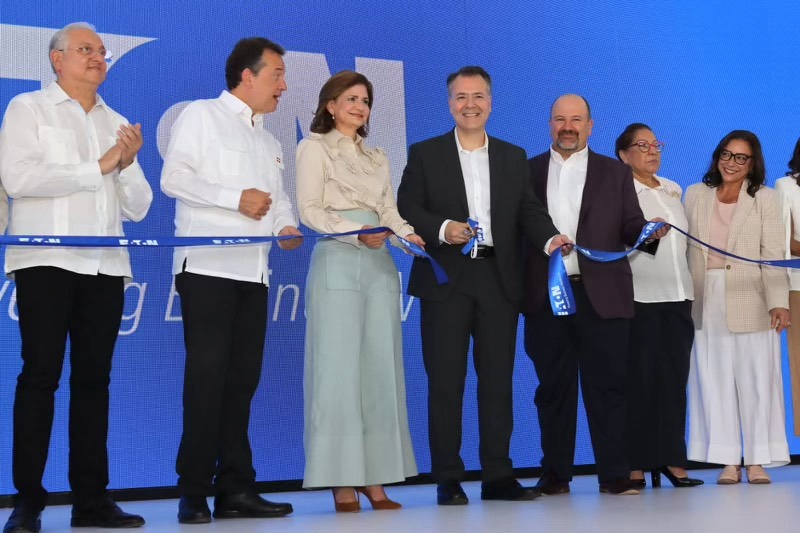
Intelligent power management company Eaton is opening its new 65,000 square-foot, state-of-the-art assembly plant in Santiago de los Caballeros to meet growing demand for its fuses. Announced in February 2024, the project will increase supplies of Eaton’s Bussmann series fuses, which provide critical safety functionality in electric vehicles (EVs), renewable and energy storage projects, data center as well as other industrial applications.
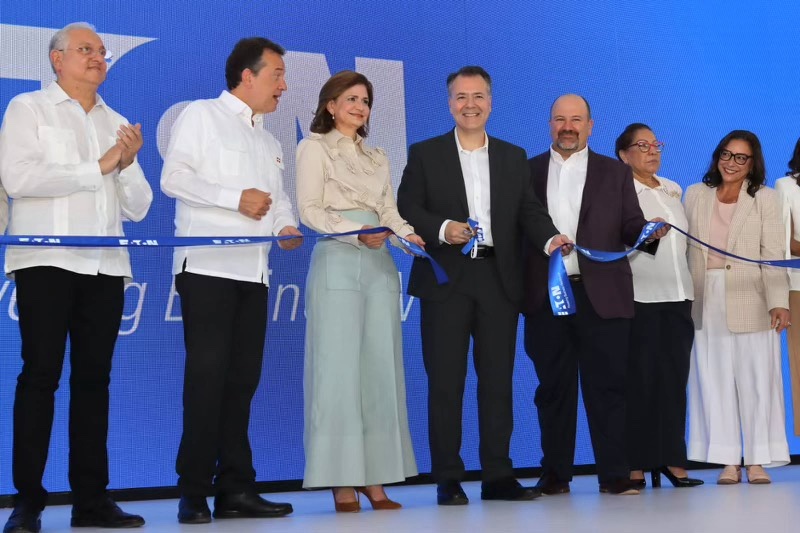
“The latest expansion of Eaton’s manufacturing capacity in Santiago was completed in record time to meet unprecedented demand for our solutions that are at the center of the world’s energy transformation,” said Rob Griffin, vice president and general manager, Eaton’s Bussmann Division. “Across the globe, we’re helping customers simplify intelligent power management to electrify their operations safely, resiliently and sustainably. The Eaton Santiago facility will assemble and package fuses and fuse accessories that provide vital functionality in these applications.”

Eaton has operated in the Dominican Republic for more than 35 years and is one of the country’s largest manufacturers. The Eaton Santiago facility is the company’s fifth manufacturing site in the Dominican Republic.
The new Eaton facility in Santiago is part of the company’s investment in North American manufacturing. In 2023, Eaton announced nearly $750M in investments to increase manufacturing capacity for electrical assemblies including switchgear, switchboards and circuit breakers; EV charging technology, transformers, voltage regulators and more; as well as underground protective connectors for the electric grid.
Eaton is an intelligent power management company dedicated to protecting the environment and improving the quality of life for people everywhere. We make products for the data center, utility, industrial, commercial, machine building, residential, aerospace and mobility markets. We are guided by our commitment to do business right, to operate sustainably and to help our customers manage power ─ today and well into the future. By capitalizing on the global growth trends of electrification and digitalization, we’re accelerating the planet’s transition to renewable energy sources, helping to solve the world’s most urgent power management challenges, and building a more sustainable society for people today and generations to come.
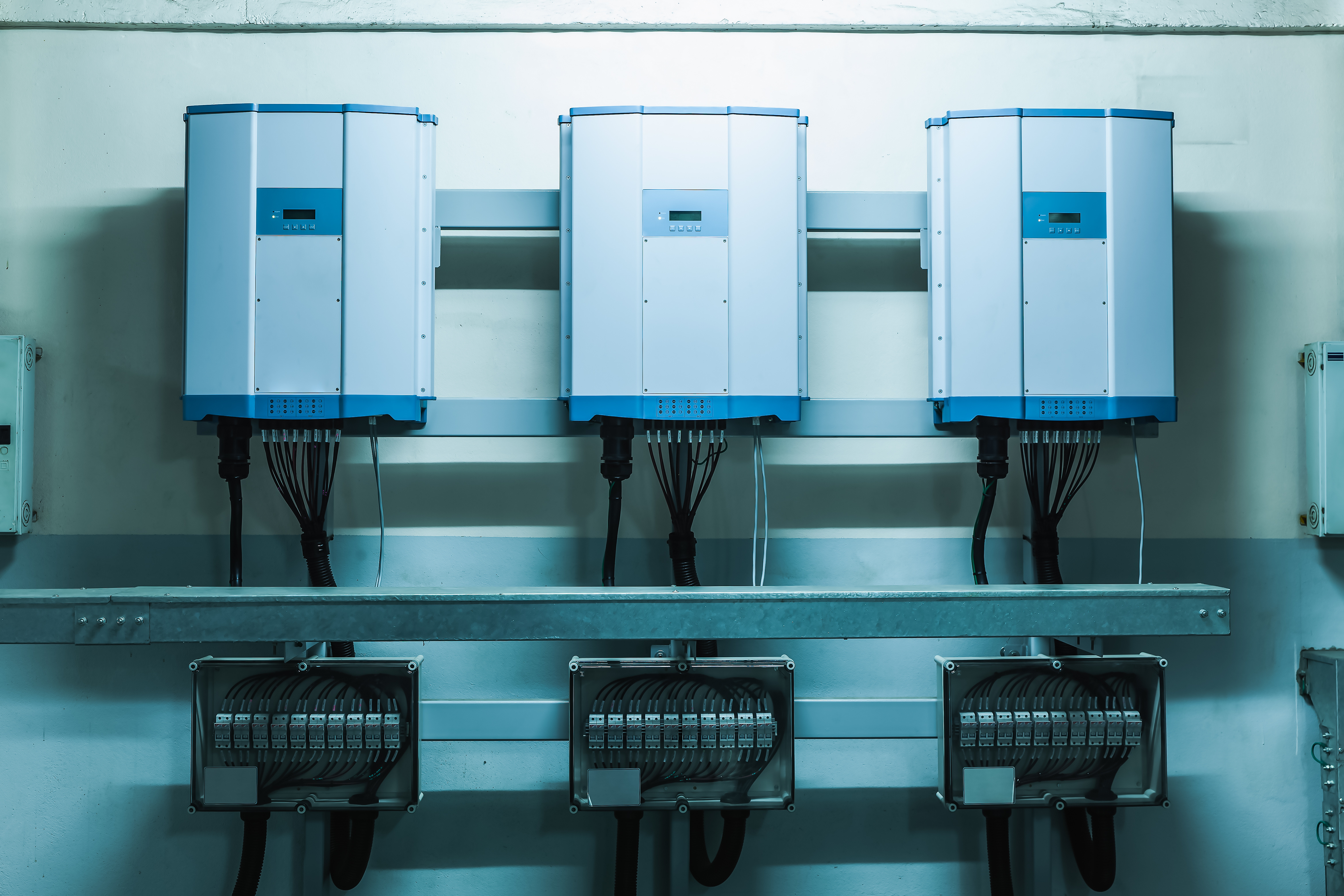
Global energy storage platform provider Powin LLC (Powin) announced its new multi-cell-based hardware platform, the Powin Pod (Pod). Designed for utility-scale projects, Pod takes Powin’s battery energy storage system (BESS) technology to the next level, setting a new standard for energy storage solutions with higher energy density, top-tier safety, reliability and enhanced cost savings. The Pod platform complements Powin's Centipede product line, offering a comprehensive suite of solutions to meet diverse customer requirements.
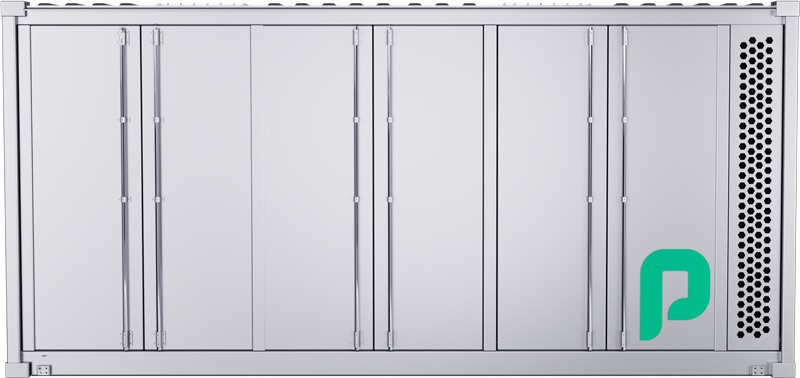
"We consistently challenge ourselves to improve our products and services to ensure we are continuously delivering nothing short of excellence to both new and existing customers," said Jeff Waters, CEO of Powin. "This next-generation product advancement demonstrates our commitment to bringing the safest and highest quality energy storage solutions to the market, advancing the entire industry as a result."
The new Pod platform is part of a fully integrated Powin energy storage solution that includes an end-to-end offering—spanning StackOS software, system design, delivery, commissioning and long-term service—that will enable Powin to meet growing customer needs with an improved, reliable and energy-dense storage platform. Powin’s proprietary Battery Management System and Energy Management controls comply with robust localized cybersecurity standards and regulations, ensuring superior protection for data privacy and intellectual property, guaranteeing security of customers’ data, operations and investment at all times. Customers who select Pod will benefit from Powin's full authorization to perform long-term services at their site, as well as comprehensive system training from the company. Within a fully integrated solution, Powin delivers safety, availability, insight and flexibility, providing lower risk, enhanced performance and improved revenue generation.
The Powin Pod platform offers benefits such as:
With a proven track record of over 17 GWh deployed and under construction worldwide and over six million battery cells monitored, Powin is a trusted and established US-based integrator. Powin provides world-class logistics for on-time delivery, 20-year performance guarantee and long-term service structures and relies on a 24/7 Remote Operations Center and over 500 field service technicians and Authorized Service Providers to ensure optimal system performance.
Powin Pod is now available to order in markets globally and delivery is expected to begin in mid-2025. Starting in 2026, Powin Pod will be manufactured in the US complying with US Domestic Content requirements.
Powin | www.powin.com
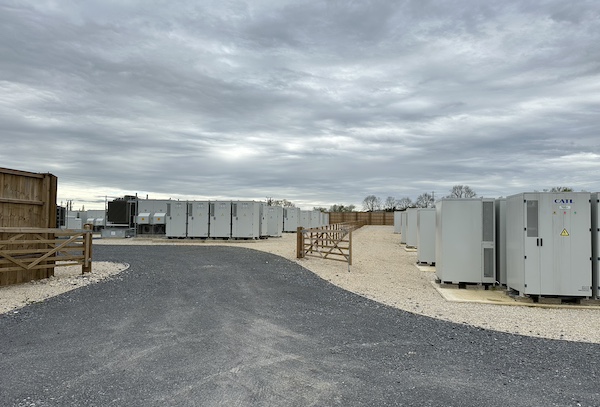
Gore Street Capital, the investment manager of the internationally diversified Gore Street Energy Storage Fund, announced an agreement with ACCURE Battery Intelligence, a leading provider of battery analytics technology, and international insurance firm HDI Global SE, to use data analytics technology as part of an innovative risk-managed policy covering two energy storage systems.
Gore Street Capital has implemented ACCURE’s AI-based software at its 80 MW Stony project to increase safety by reducing the risk of thermal runaway and operational issues. The technology was tested at the site in 2022, as well as at the 10 MW Lower Road project, and will be installed at the 50 MW Ferrymuir asset, which is also located in the UK. By using cloud-based predictive analytics, Gore Street Capital has secured an insurance package from HDI Global SE that utilises a risk-managed approach to accurately assess coverage.
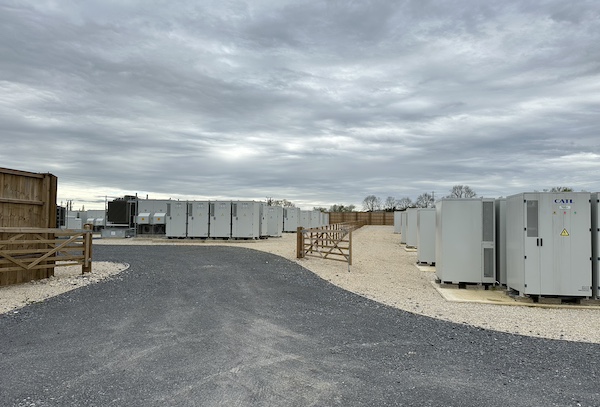
Alex O’Cinneide, CEO of Gore Street Capital, said: “As the manager of a market-leading portfolio of energy storage assets, we are always looking for new approaches to help improve the safety and operations of the assets under our care. We’re proud to have helped establish battery analytics software as a valuable means of assessing and reducing risks to secure enhanced insurance conditions.
“The insurance benefits we have secured for our client and its investors are just one aspect of the advantages of this approach and I commend everyone involved for delivering this market-leading strategy. We hope this will pave the way for others to follow in the adoption of new technological approaches to safe and sustainable battery energy storage system operations.”
Following its assessment of ACCURE’s AI-based cloud computing software, HDI Global SE’s technology innovation arm, HDI TH!NX, developed a joint business model with ACCURE that increases risk transparency for the insurer. HDI Risk Consulting was then able to determine that Gore Street Capital’s insurance risk assessment for the Stony and Ferrymuir energy storage projects should take into account improved safety measures provided by the predictive technology.
HDI’s insurance agreement covering the Stony and Ferrymuir assets, delivered through PIB Insurance Brokers, recognises the effective utilisation of data analytics as a valuable means of improving the safety, reliability and operations of battery energy storage systems.
“We are delighted to be working with ACCURE, alongside Gore Street Capital and PIB, to provide an innovative, risk-managed solution that incorporates ACCURE’s battery safety intelligence for BESS risks. By combining the technology expertise of HDI TH!NX with our deep underwriting and risk engineering capabilities, we create solutions to support clients through times of transformation.” said Dr Dirk Höring, Member of the Executive Board, HDI Global SE.
Andrew Sinclair, Head of Renewable Energy Practise at PIB Insurance Brokers, added: “We are thrilled to deliver this bespoke policy to Gore Street Capital, which recognises the benefits of combining improved risk management, performance, safety, revenue and cost for its energy storage portfolio to ultimately deliver greater value for investors.”
ACCURE’s predictive analytics software uses AI, field data and modelling to detect irregular battery cell behavior, diagnose battery health and recommend corrective action for any problems identified. The platform gives energy storage providers more control and lead time to address critical issues, ensuring their battery systems run safely and at peak performance.
“In addition to improving safety, we look forward to ACCURE’s predictive analytics technology enabling us to accurately monitor degradation of our batteries to determine the most economic operational strategies when accessing multiple revenue streams,” said Daniel Sherlock-Bruke, Head of Asset Performance at Gore Street Capital.
"Analytics software such as ACCURE's is a win-win for asset owners, unlocking cost savings whilst materially improving safety and project optimisation. We hope these policies set the standard as this would represent a legitimate safety improvement for the whole industry."
Kai-Philipp Kairies, CEO and Co-founder of ACCURE, commented: “With a track record of monitoring more than 40 energy storage sites, we have proven over and over again that predictive analytics increases safety and reliability for battery energy storage systems.
“As insurance companies recognise the benefits that the technology provides to energy storage operators like Gore Street Capital, we can look forward to even greater deployment of energy storage systems that support renewable energy and the grid.”
Gore Street Capital will continue to work alongside PIB and other partners to achieve similar benefits across its 1.248 GW of energy storage systems under management, located in the UK, Ireland, Western Europe and the US.
To find out more about this innovative relationship between battery energy storage safety and insurance, join Gore Street Capital, ACCURE, HDI Global SE, and PIB on 15 May for a webinar hosted by Energy Storage News. Learn how innovations in insurance unlock the full potential of battery storage systems
Gore Street Capital | https://gorestreetcap.com/
ACCURE | https://www.accure.net
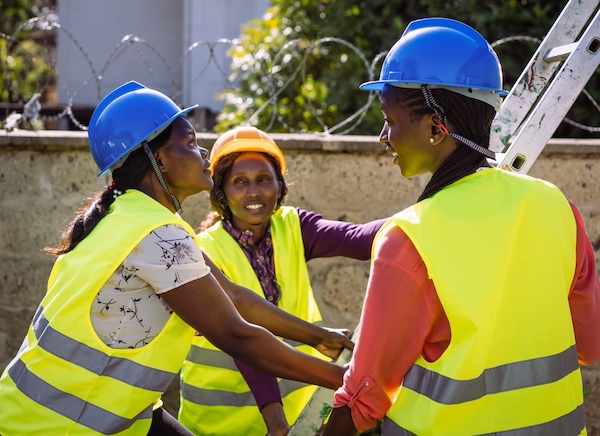
Remote Energy proudly celebrates the graduation of 53 remarkable women from its Spring 2024 Women's Only Solar Fundamentals with Energy Storage Units 1 & 2 Class. This diverse cohort, representing Uganda, Cameroon, Tanzania, and Kenya, embarked on a transformative journey of intensive training. Their dedication not only deepened their solar skills but also shattered the barriers and stereotypes that often hinder women from accessing technical education and job opportunities in the solar industry.
What sets the Remote Energy Women's Program apart is its commitment to providing students with the extra time and encouragement needed to successfully complete the course. Despite facing challenges such as network issues, electricity failures, lack of prior experience with online courses, and family responsibilities, these resilient women persevered. They attribute much of their success to the supportive environment created by the women’s only class, where they felt empowered and confident to participate fully.
One student shared, "Being among my fellow women made me confident and able to participate in any activity." The overwhelmingly positive feedback from the students underscores the importance of a women-only environment in their learning experience.
"We are incredibly proud of the women who have graduated from our program. Their determination and commitment inspire us every day,” said Carol Weis, Co-founder of Remote Energy.
Remarkably, 100% of the students expressed their desire to pursue a solar license, highlighting the significant impact of the program. Many cited lack of experience and opportunities as their biggest barriers to entering the solar industry. The course curriculum included hands-on lab classes where students learned to safely test PV modules, experiment with shading and orientation, assemble and wire solar lighting systems, and mount PV modules onto roofs.
Weis also expressed sincere appreciation to numerous individual and corporate donors, including Fluke Energy, Andersen Construction, the Rotary Club International, and BayWa r.e.s. SES. “This program would not be possible without the generous support of the community. With a record number of students in this cohort, we eagerly anticipate welcoming an even larger group of aspiring solar professionals in our Fall 2024 classes, to build a gender-balanced, diverse and inclusive solar industry."
Remote Energy | www.remoteenergy.org
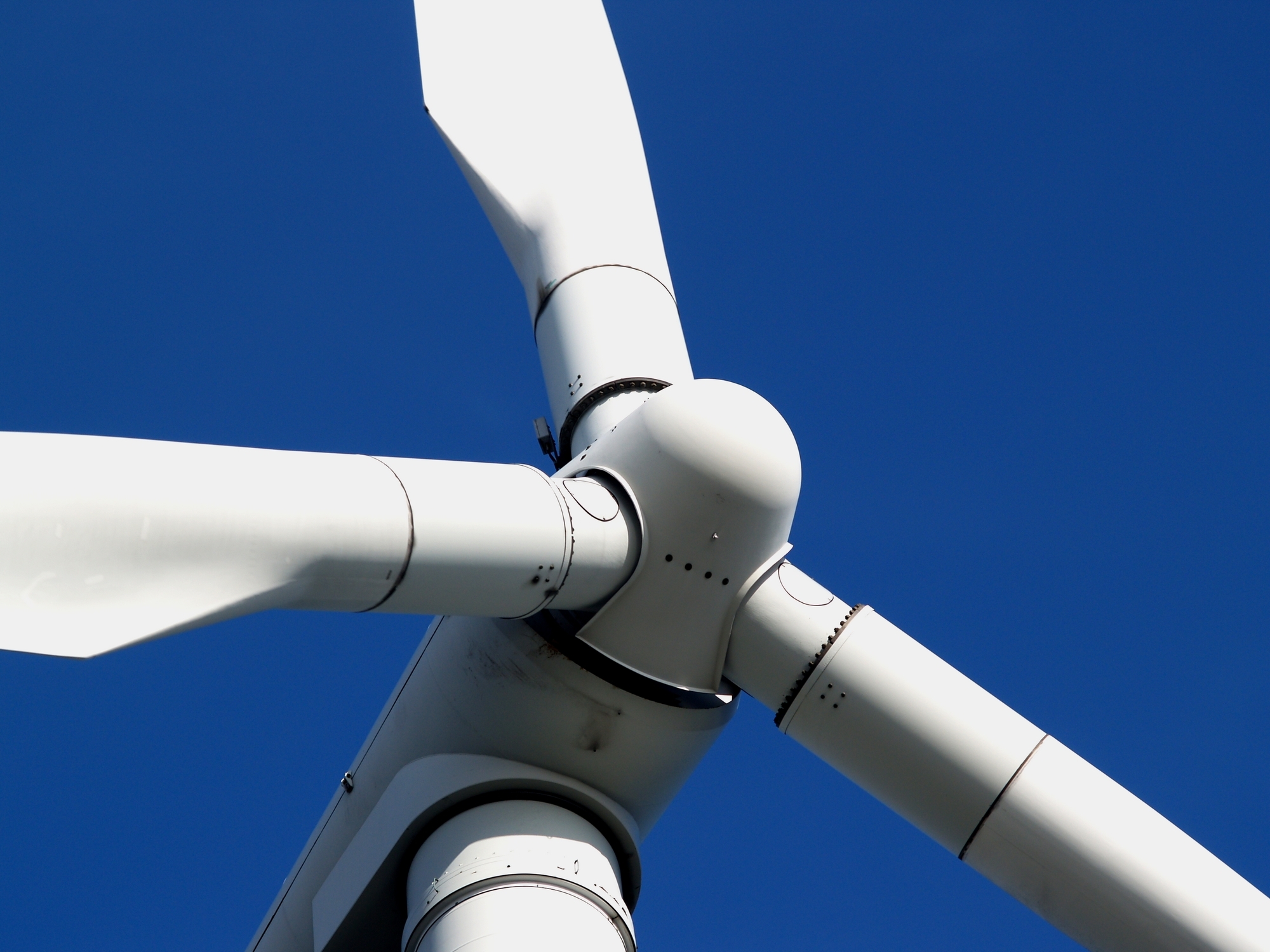
The Oceantic Network, the leading organization working to advance offshore wind and other ocean renewable industries and their supply chains, applauds the signing of Maryland HB 1296 by Governor Wes Moore. Moore signed the bill into law, setting up a future offshore wind solicitation for the state and allowing MarWin and Momentum Wind developer US Wind to renegotiate its current offtake agreements. Both actions are critical to Maryland’s efforts to meet its 8.5GW of offshore wind power generation goal by 2031 and maintain the state’s opportunity to become a hub of offshore wind activity.
The passage of this law follows Ørsted’s January withdrawal from its power purchase agreement with Maryland for its Skipjack Wind project. It ensures Maryland can quickly re-allocate the Offshore Wind Renewable Energy Credits held by Ørsted to US Wind without exceeding mandated ratepayer caps.
The following statement can be attributed to Liz Burdock, CEO of Oceantic Network:
“Today’s bill signing demonstrates Maryland’s steadfast commitment to maintaining its strategic manufacturing advantage by working with industry to develop solutions and help reset current markets. The offshore wind industry already contributed massively to the state’s economy and is poised to generate approximately $650,000,000 in investment and support nearly 35,000 jobs. Today’s bill contains provisions that will buttress efforts to realize offshore wind investments in facilities like Tradepoint Atlantic and the Port of Baltimore, as well as spur investments beyond Maryland in ports and manufacturing facilities that can be utilized for projects across the East Coast. Along with the Bureau of Ocean Energy Management’s upcoming Central Atlantic Lease Auction this summer, this bill and future efforts from Maryland will place the state’s 8.5 GW goal firmly within reach.”
Oceantic Network | https://oceantic.org/

Secretary of Energy Granholm took the first official step to stand up the Department of Energy-affiliated non-profit Foundation for Energy Security and Innovation (FESI) by appointing its inaugural board. The “Friends of FESI”Initiative of the nonpartisan, non-profit Federation of American Scientists (FAS) steps forward to applaud the Secretary, congratulate the new board members, and wish FESI well as it officially begins its first year. The Inaugural FESI Board consists of 13 accomplished members whose backgrounds span the nation’s regions and communities and who have deep experience in innovation, national security, philanthropy, business, science, and other sectors. It includes:
Since the CHIPS and Science Act authorized FESI in 2022, FAS, along with many allies and supporters who collectively comprise the “Friends of FESI,” have been working to enable FESI to achieve its full potential as a major contributor to the achievement of DOE’s vital goals. “Friends of FESI” has been seeking projects and activities that the foundation could take on that would advance the DOE mission through collaboration with private sector and philanthropic partners.
“FAS enthusiastically celebrates this FESI milestone because, as one of the country’s oldest science and technology-focused public interest organizations, we recognize the scale of the energy transition challenge and the urgency to broker new collaborations and models to move new energy technology from lab to market,” says Dan Correa, CEO of FAS. “As a ‘Friend of FESI’ FAS continues our outreach amongst our diverse network of experts to surface the best ideas for FESI to consider implementing.” The federation is soliciting ideas at fas.org/fesi, underway since FESI’s authorization.
FESI has great potential to foster the public-private partnerships necessary to accelerate the innovation and commercialization of technologies that will power the transition to clean energy. Gathering this diverse group of accomplished board members is the first step. The next is for the FESI Board to pursue projects set to make real impact. Given FESI’s bipartisan support in the CHIPS & Science Act, FAS hopes the board is joined by Congress, industry leaders and others to continue to support FESI in its initial years.
“FESI’s establishment is a vital initial step, but its value will depend on what happens next,” says David M. Hart, a professor at George Mason University’s Schar School of Policy and Government and leader of the “Friends of FESI” initiative at FAS. “FESI’s new Board of Directors should take immediate actions that have immediate impact, but more importantly, put the foundation on a path to expand that impact exponentially in the coming years. That means thinking big from the start, identifying unique high-leverage opportunities, and systematically building the capacity to realize them.”
Federation of American Scientists | fas.org
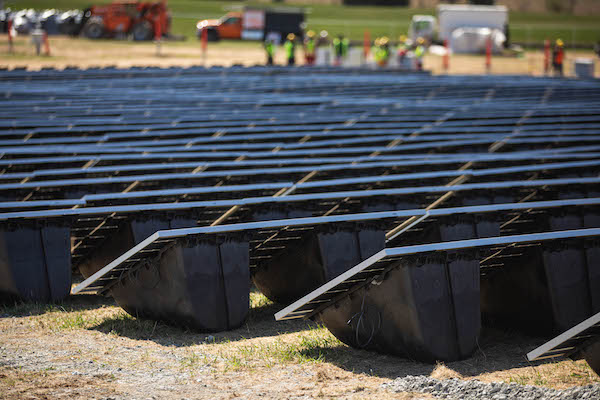
Alternative Energies May 15, 2023
The United States is slow to anger, but relentlessly seeks victory once it enters a struggle, throwing all its resources into the conflict. “When we go to war, we should have a purpose that our people understand and support,” as former Secretary ....
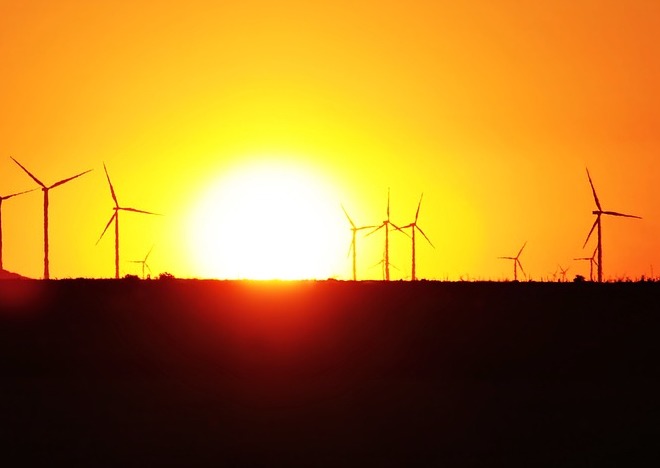
Unleashing trillions of dollars for a resilient energy future is within our grasp — if we can successfully navigate investment risk and project uncertainties.
The money is there — so where are the projects?
A cleaner and more secure energy future will depend on tapping trillions of dollars of capital. The need to mobilize money and markets to enable the energy transition was one of the key findings of one of the largest studies ever conducted among the global energy sector C-suite. This will mean finding ways to reduce the barriers and uncertainties that prevent money from flowing into the projects and technologies that will transform the energy system. It will also mean fostering greater collaboration and alignment among key players in the energy space.
 Interestingly, the study found that insufficient access to finance was not considered the primary cause of the current global energy crisis. In fact, capital was seen to be available — but not being unlocked. Why is that? The answer lies in the differing risk profiles of energy transition investments around the world. These risks manifest in multiple ways, including uncertainties relating to project planning, public education, stakeholder engagement, permitting, approvals, policy at national and local levels, funding and incentives, technology availability, and supply chains.
Interestingly, the study found that insufficient access to finance was not considered the primary cause of the current global energy crisis. In fact, capital was seen to be available — but not being unlocked. Why is that? The answer lies in the differing risk profiles of energy transition investments around the world. These risks manifest in multiple ways, including uncertainties relating to project planning, public education, stakeholder engagement, permitting, approvals, policy at national and local levels, funding and incentives, technology availability, and supply chains.
These risks need to be addressed to create more appealing investment opportunities for both public and private sector funders. This will require smart policy and regulatory frameworks that drive returns from long-term investment into energy infrastructure. It will also require investors to recognize that resilient energy infrastructure is more than an ESG play — it is a smart investment in the context of doing business in the 21st century.
Make de-risking investment profiles a number one priority
According to the study, 80 percent of respondents believe the lack of capital being deployed to accelerate the transition is the primary barrier to building the infrastructure required to improve energy security. At the same time, investors are looking for opportunities to invest in infrastructure that meets ESG and sustainability criteria. This suggests an imbalance between the supply and demand of capital for energy transition projects.
How can we close the gap?
One way is to link investors directly to energy companies. Not only would this enable true collaboration and non-traditional partnerships, but it would change the way project financing is conceived and structured — ultimately aiding in potentially satisfying the risk appetite of latent but hugely influential investors, such as pension funds. The current mismatch of investor appetite and investable projects reveals a need for improving risk profiles, as well as a mindset shift towards how we bring investment and developer stakeholders together for mutual benefit. The circular dilemma remains: one sector is looking for capital to undertake projects within their skill to deploy, while another sector wonders where the investable projects are.
This conflict is being played out around the world; promising project announcements are made, only to be followed by slow progress (or no action at all). This inertia results when risks are compounded and poorly understood. To encourage collaboration between project developers and investors with an ESG focus, more attractive investment opportunities can be created by pulling several levers: public and private investment strategies, green bonds and other sustainable finance instruments, and innovative financing models such as impact investing.
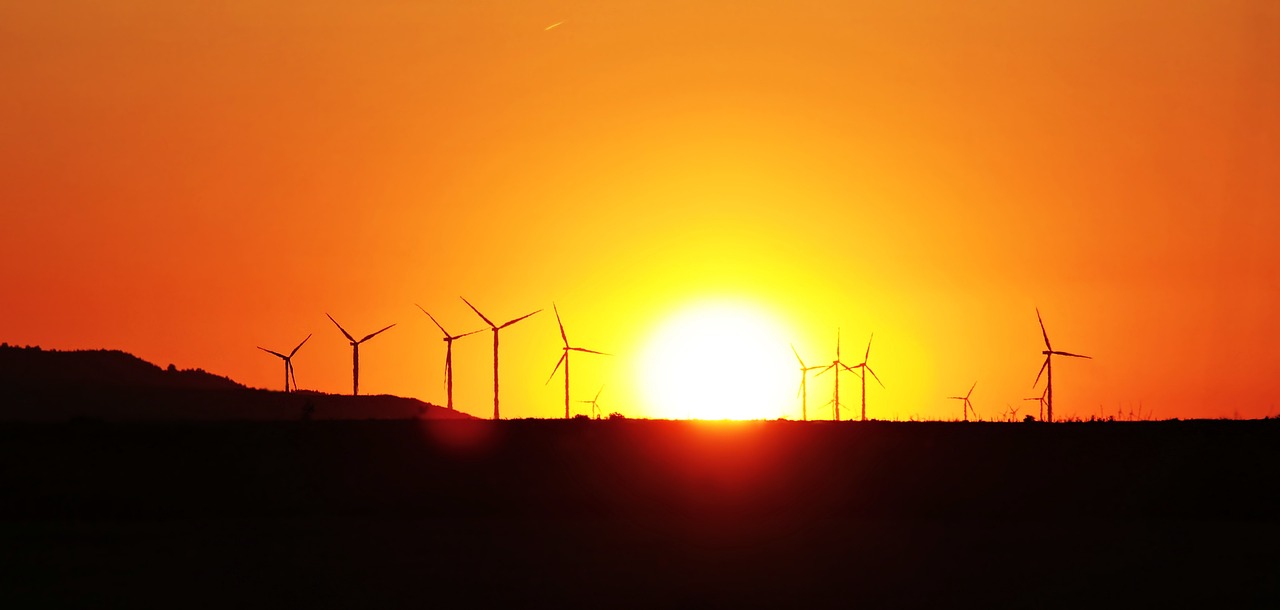
Expedite permitting to speed the adoption of new technologies
Another effective strategy to de-risk investment profiles is found in leveraging new technologies and approaches that reduce costs, increase efficiency, and enhance the reliability of energy supply. Research shows that 62 percent of respondents indicated a moderate or significant increase in investment in new and transitional technologies respectively, highlighting the growing interest in innovative solutions to drive the energy transition forward.
Hydrogen, carbon capture and storage, large-scale energy storage, and smart grids are some of the emerging technologies identified by survey respondents as having the greatest potential to transform the energy system and create new investment opportunities. However, these technologies face challenges such as long lag times between conception and implementation.
If the regulatory environment makes sense, then policy uncertainty is reduced, and the all-important permitting pathways are well understood and can be navigated. Currently, the lack of clear, timely, and fit-for-purpose permitting is a major roadblock to the energy transition. To truly unleash the potential of transitional technologies requires the acceleration of regulatory systems that better respond to the nuance and complexity of such technologies (rather than the current one-size-fits all approach). In addition, permitting processes must also be expedited to dramatically decrease the period between innovation, commercialization, and implementation. One of the key elements of faster permitting is effective consultation with stakeholders and engagement with communities where these projects will be housed for decades. This is a highly complex area that requires both technical and communication skills.
The power of collaboration, consistency, and systems thinking
The report also reveals the need for greater collaboration among companies in the energy space to build a more resilient system. The report shows that, in achieving net zero, there is a near-equal split between those increasing investment (47 percent of respondents), and those decreasing investment (39 percent of respondents). This illustrates the complexity and diversity of the system around the world. A more resilient system will require all its components – goals and actions – to be aligned towards a common outcome.
Another way to de-risk the energy transition is to establish consistent, transparent, and supportive policy frameworks that encourage investment and drive technological innovation. The energy transition depends on policy to guide its direction and speed by affecting how investors feel and how the markets behave. However, inconsistent or inadequate policy can also be a source of uncertainty and instability. For example, shifting political priorities, conflicting international standards, and the lack of market-based mechanisms can hinder the deployment of sustainable technologies, resulting in a reluctance to commit resources to long-term projects.
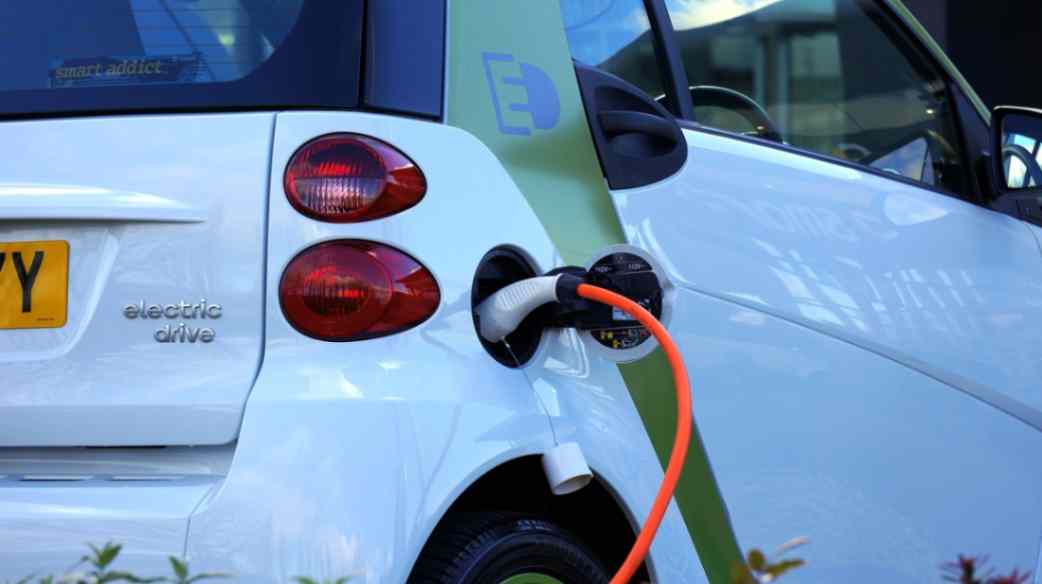
Variations in country-to-country deployment creates disparities in energy transition progress. For instance, the 2022 Inflation Reduction Act in the US has posed challenges for the rest of the world, by potentially channeling energy transition investment away from other markets and into the US. This highlights the need for a globally unified approach to energy policy that balances various national interests while addressing a global problem.
To facilitate the energy transition, it is imperative to establish stable, cohesive, and forward-looking policies that align with global goals and standards. By harmonizing international standards, and providing clear and consistent signals, governments and policymakers can generate investor confidence, helping to foster a robust energy ecosystem that propels the sector forward.
Furthermore, substantive and far-reaching discussions at international events like the United Nations Conference of the Parties (COP), are essential to facilitate this global alignment. These events provide an opportunity to de-risk the energy transition through consistent policy that enables countries to work together, ensuring that the global community can tackle the challenges and opportunities of the energy transition as a united front.
Keeping net-zero ambitions on track
Despite the challenges faced by the energy sector, the latest research reveals a key positive: 91 percent of energy leaders surveyed are working towards achieving net zero. This demonstrates a strong commitment to the transition and clear recognition of its importance. It also emphasizes the need to accelerate our efforts, streamline processes, and reduce barriers to realizing net-zero ambitions — and further underscores the need to de-risk energy transition investment by removing uncertainties.
The solution is collaborating and harmonizing our goals with the main players in the energy sector across the private and public sectors, while establishing consistent, transparent, and supportive policy frameworks that encourage investment and drive technological innovation.
These tasks, while daunting, are achievable. They require vision, leadership, and action from all stakeholders involved. By adopting a new mindset about how we participate in the energy system and what our obligations are, we can stimulate the rapid progress needed on the road to net zero.
Dr. Tej Gidda (Ph.D., M.Sc., BSc Eng) is an educator and engineer with over 20 years of experience in the energy and environmental fields. As GHD Global Leader – Future Energy, Tej is passionate about moving society along the path towards a future of secure, reliable, and affordable low-carbon energy. His focus is on helping public and private sector clients set and deliver on decarbonization goals in order to achieve long-lasting positive change for customers, communities, and the climate. Tej enjoys fostering the next generation of clean energy champions as an Adjunct Professor at the University of Waterloo Department of Civil and Environmental Engineering.
GHD | www.ghd.com
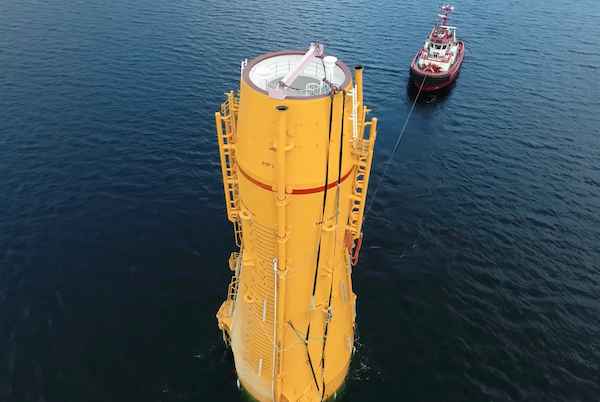
The Kincardine floating wind farm, located off the east coast of Scotland, was a landmark development: the first commercial-scale project of its kind in the UK sector. Therefore, it has been closely watched by the industry throughout its installation. With two of the turbines now having gone through heavy maintenance, it has also provided valuable lessons into the O&M processes of floating wind projects.
In late May, the second floating wind turbine from the five-turbine development arrived in the port of Massvlakte, Rotterdam, for maintenance. An Anchor Handling Tug Supply (AHTS)
vessel was used to deliver the KIN-02 turbine two weeks after a Platform Supply Vessel (PSV) and AHTS had worked to disconnect the turbine from the wind farm site. The towing vessel became the third vessel used in the operation.
This is not the first turbine disconnected from the site and towed for maintenance. In the summer of 2022, KIN-03 became the world’s first-ever floating wind turbine that required heavy maintenance (i.e. being disconnected and towed for repair). It was also towed from Scotland to Massvlakte.
Each of these operations has provided valuable lessons for the ever-watchful industry in how to navigate the complexities of heavy maintenance in floating wind as the market segment grows.

The heavy maintenance process
When one of Kincardine’s five floating 9.5 MW turbines (KIN-03) suffered a technical failure in May 2022, a major technical component needed to be replaced. The heavy maintenance strategy selected by the developer and the offshore contractors consisted in disconnecting and towing the turbine and its floater to Rotterdam for maintenance, followed by a return tow and re-connection. All of the infrastructure, such as crane and tower access, remained at the quay following the construction phase. (Note, the following analysis only covers KIN-03, as details of the second turbine operation are not yet available).
Comparing the net vessel days for both the maintenance and the installation campaigns at this project highlights how using a dedicated marine spread can positively impact operations.
For this first-ever operation, a total of 17.2 net vessel days were required during turbine reconnection—only a slight increase on the 14.6 net vessel days that were required for the first hook-up operation performed during the initial installation in 2021. However, it exceeds the average of eight net vessel days during installation. The marine spread used in the heavy maintenance operation differed from that used during installation. Due to this, it did not benefit from the learning curve and experience gained throughout the initial installation, which ultimately led to the lower average vessel days.
The array cable re-connection operation encountered a similar effect. The process was performed by one AHTS that spent 10 net vessel days on the operation. This compares to the installation campaign, where the array cable second-end pull-in lasted a maximum of 23.7 hours using a cable layer.
Overall, the turbine shutdown duration can be broken up as 14 days at the quay for maintenance, 52 days from turbine disconnection to turbine reconnection, and 94 days from disconnection to the end of post-reconnection activities.
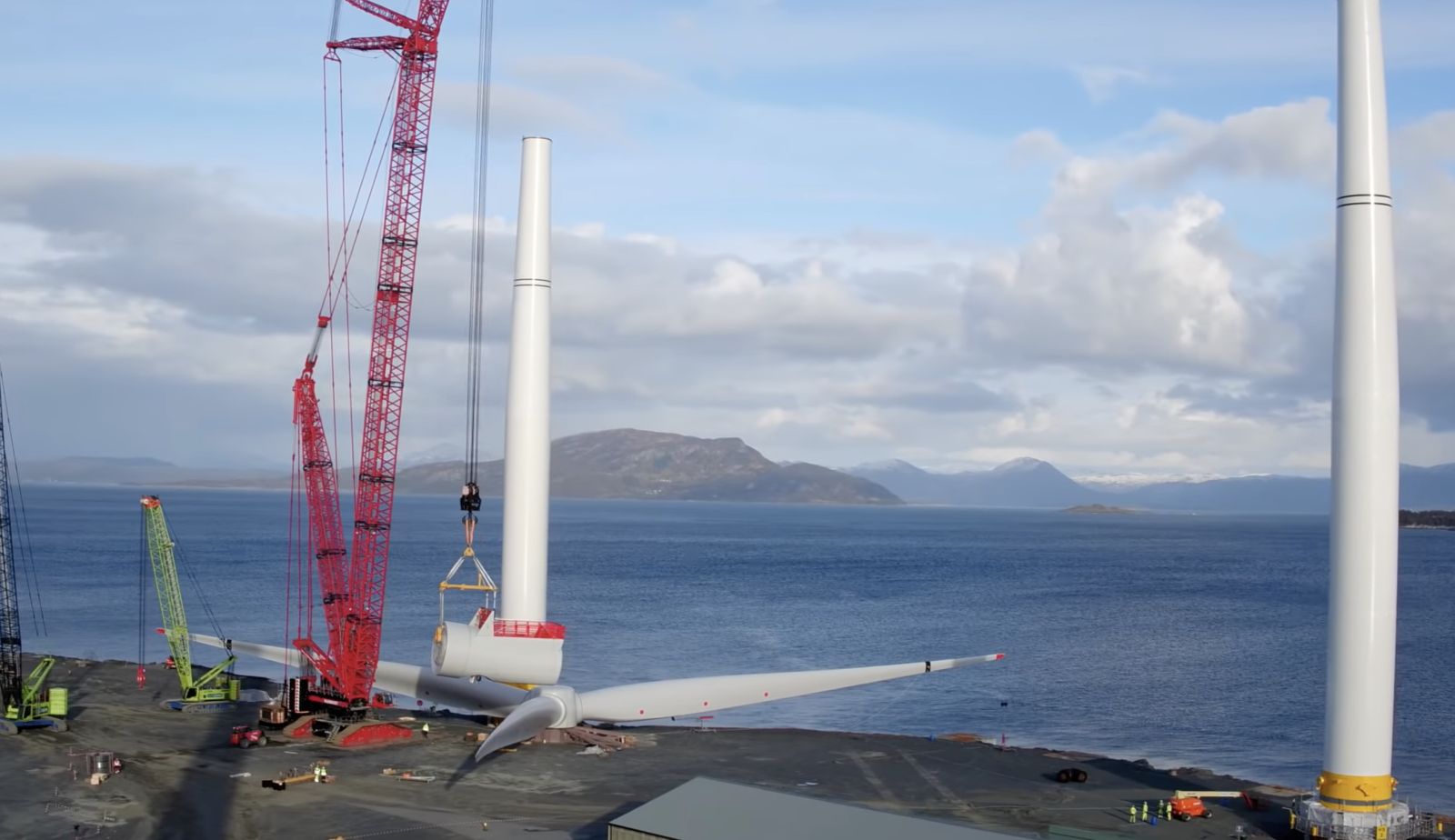
What developers should keep in mind for heavy maintenance operations
This analysis has uncovered two main lessons developers should consider when planning a floating wind project: the need to identify an appropriate O&M port, and to guarantee that a secure fleet is available.
Floating wind O&M operations require a port with both sufficient room and a deep-water quay. The port must also be equipped with a heavy crane with sufficient tip height to accommodate large floaters and reach turbine elevation. Distance to the wind farm should also be taken into account, as shorter distances will reduce towing time and, therefore, minimize transit and non-productive turbine time.
During the heavy maintenance period for KIN-03 and KIN-02, the selected quay (which had also been utilized in the initial installation phase of the wind farm project), was already busy as a marshalling area for other North Sea projects. This complicated the schedule significantly, as the availability of the quay and its facilities had to be navigated alongside these other projects. This highlights the importance of abundant quay availability both for installation (long-term planning) and maintenance that may be needed on short notice.
At the time of the first turbine’s maintenance program (June 2022), the North Sea AHTS market was in an exceptional situation: the largest bollard pull AHTS units contracted at over $200,000 a day, the highest rate in over a decade.
During this time, the spot market was close to selling out due to medium-term commitments, alongside the demand for high bollard pull vessels for the installation phase at a Norwegian floating wind farm project. The Norwegian project required the use of four AHTS above a 200t bollard pull. With spot rates ranging from $63,000 to $210,000 for the vessels contracted for Kincardine’s maintenance, the total cost of the marine spread used in the first repair campaign was more than $4 million.
Developers should therefore consider the need to structure maintenance contracts with AHTS companies, either through frame agreements or long-term charters, to decrease their exposure to spot market day rates as the market tightens in the future.

While these lessons are relevant for floating wind developers now, new players are looking towards alternative heavy O&M maintenance options for the future. Two crane concepts are especially relevant in this instance. The first method is for a crane to be included in the turbine nacelle to be able to directly lift the component which requires repair from the floater, as is currently seen on onshore turbines. This method is already employed in onshore turbines and could be applicable for offshore. The second method is self-elevating cranes with several such solutions already in development.
The heavy maintenance operations conducted on floating turbines at the Kincardine wind farm have provided invaluable insights for industry players, especially developers. The complex process of disconnecting and towing turbines for repairs highlights the need for meticulous planning and exploration of alternative maintenance strategies, some of which are already in the pipeline. As the industry evolves, careful consideration of ports, and securing fleet contracts, will be crucial in driving efficient and cost-effective O&M practices for the floating wind market.
Sarah McLean is Market Research Analyst at Spinergie, a maritime technology company specializing in emission, vessel performance, and operation optimization.
Spinergie | www.spinergie.com
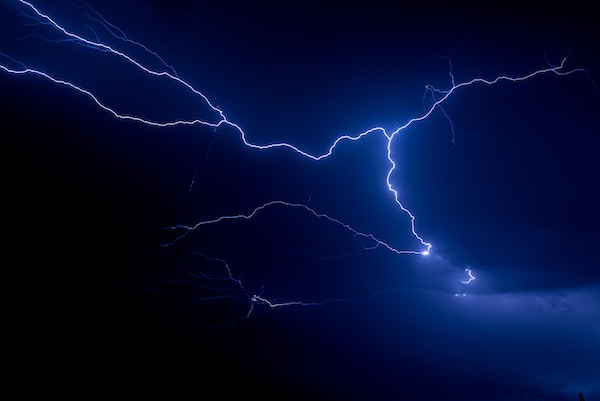
According to the Energy Information Administration (EIA), developers plan to add 54.5 gigawatts (GW) of new utility-scale electric generating capacity to the U.S. power grid in 2023. More than half of this capacity will be solar. Wind power and battery storage are expected to account for roughly 11 percent and 17 percent, respectively.
A large percentage of new installations are being developed in areas that are prone to extreme weather events and natural disasters (e.g., Texas and California), including high wind, tornadoes, hail, flooding, earthquakes, wildfires, etc. With the frequency and severity of many of these events increasing, project developers, asset owners, and tax equity partners are under growing pressure to better understand and mitigate risk.
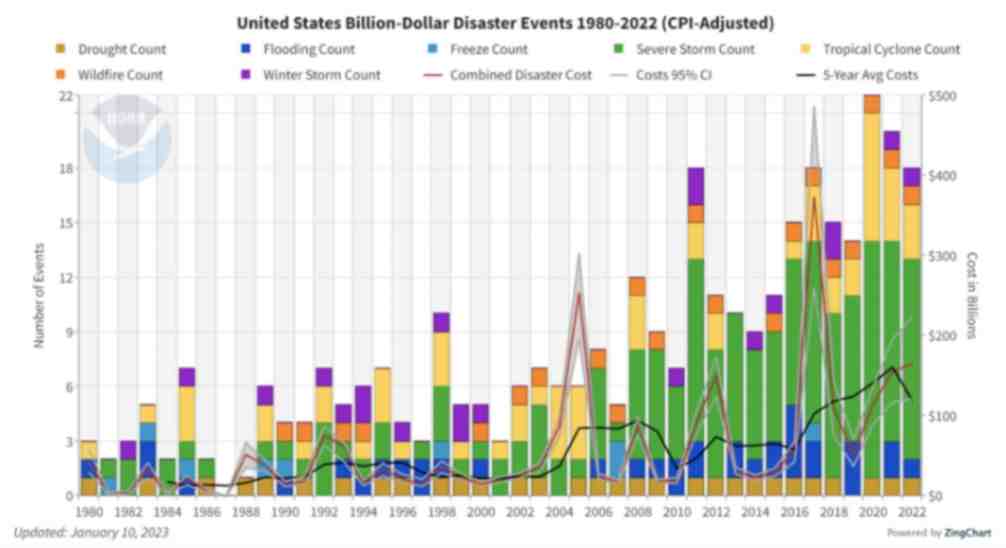
Figure 1. The history of billion-dollar disasters in the United States each year from 1980 to 2022 (source: NOAA)
In terms of loss prevention, a Catastrophe (CAT) Modeling Study is the first step to understanding the exposure and potential financial loss from natural hazards or extreme weather events. CAT studies form the foundation for wider risk management strategies, and have significant implications for insurance costs and coverage.
Despite their importance, developers often view these studies as little more than a formality required for project financing. As a result, they are often conducted late in the development cycle, typically after a site has been selected. However, a strong case can be made for engaging early with an independent third party to perform a more rigorous site-specific technical assessment. Doing so can provide several advantages over traditional assessments conducted by insurance brokerage affiliates, who may not possess the specialty expertise or technical understanding needed to properly apply models or interpret the results they generate. One notable advantage of early-stage catastrophe studies is to help ensure that the range of insurance costs, which can vary from year to year with market forces, are adequately incorporated into the project financial projections.
The evolving threat of natural disasters
Over the past decade, the financial impact of natural hazard events globally has been almost three trillion dollars. In the U.S. alone, the 10-year average annual cost of natural disaster events exceeding $1 billion increased more than fourfold between the 1980s ($18.4 billion) and the 2010s ($84.5 billion).

Investors, insurers, and financiers of renewable projects have taken notice of this trend, and are subsequently adapting their behavior and standards accordingly. In the solar market, for example, insurance premiums increased roughly four-fold from 2019 to 2021. The impetus for this increase can largely be traced back to a severe storm in Texas in 2019, which resulted in an $80 million loss on 13,000 solar panels that were damaged by hail.
The event awakened the industry to the hazards severe storms present, particularly when it comes to large-scale solar arrays. Since then, the impact of convective weather on existing and planned installations has been more thoroughly evaluated during the underwriting process. However, far less attention has been given to the potential for other natural disasters; events like floods and earthquakes have not yet resulted in large losses and/or claims on renewable projects (including wind farms). The extraordinary and widespread effect of the recent Canadian wildfires may alter this behavior moving forward.
A thorough assessment, starting with a CAT study, is key to quantifying the probability of their occurrence — and estimating potential losses — so that appropriate measures can be taken to mitigate risk.
All models are not created equal
Industrywide, certain misconceptions persist around the use of CAT models to estimate losses from an extreme weather event or natural disaster.
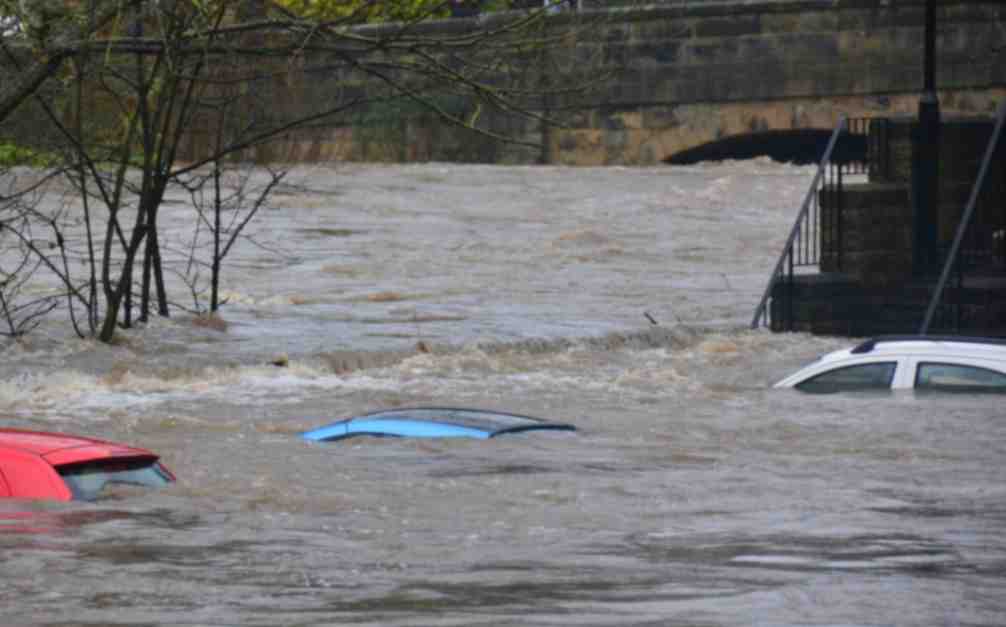
Often, the perception is that risk assessors only need a handful of model inputs to arrive at an accurate figure, with the geographic location being the most important variable. While it’s true that many practitioners running models will pre-specify certain project characteristics regardless of the asset’s design (for example, the use of steel moment frames without trackers for all solar arrays in a given region or state), failure to account for even minor details can lead to loss estimates that are off by multiple orders of magnitude.
The evaluation process has recently become even more complex with the addition of battery energy storage. Relative to standalone solar and wind farms, very little real-world experience and data on the impact of extreme weather events has been accrued on these large-scale storage installations. Such projects require an even greater level of granularity to help ensure that all risks are identified and addressed.
Even when the most advanced modeling software tools are used (which allow for thousands of lines of inputs), there is still a great deal that is subject to interpretation. If the practitioner does not possess the expertise or technical ability needed to understand the model, the margin for error can increase substantially. Ultimately, this can lead to overpaying for insurance. Worse, you may end up with a policy with insufficient coverage. In both cases, the profitability of the asset is impacted.
Supplementing CAT studies
In certain instances, it may be necessary to supplement CAT models with an even more detailed analysis of the individual property, equipment, policies, and procedures. In this way, an unbundled risk assessment can be developed that is tailored to the project. Supplemental information (site-specific wind speed studies and hydrological studies, structural assessment, flood maps, etc.) can be considered to adjust vulnerability models.
This provides an added layer of assurance that goes beyond the pre-defined asset descriptions in the software used by traditional studies or assessments. By leveraging expert elicitations, onsite investigations, and rigorous engineering-based methods, it is possible to discretely evaluate asset-specific components as part of the typical financial loss estimate study: this includes Normal Expected Loss (NEL), also known as Scenario Expected Loss (SEL); Probable Maximum Loss (PML), also known as Scenario Upper Loss (SUL); and Probabilistic Loss (PL).
Understanding the specific vulnerabilities and consequences can afford project stakeholders unique insights into quantifying and prioritizing risks, as well as identifying proper mitigation recommendations.
Every project is unique
The increasing frequency and severity of natural disasters and extreme weather events globally is placing an added burden on the renewable industry, especially when it comes to project risk assessment and mitigation. Insurers have signaled that insurance may no longer be the main basis for transferring risk; traditional risk management, as well as site and technology selection, must be considered by developers, purchasers, and financiers.
As one of the first steps in understanding exposure and the potential capital loss from a given event, CAT studies are becoming an increasingly important piece of the risk management puzzle. Developers should treat them as such by engaging early in the project lifecycle with an independent third-party practitioner with the specialty knowledge, tools, and expertise to properly interpret models and quantify risk.
Hazards and potential losses can vary significantly depending on the project design and the specific location. Every asset should be evaluated rigorously and thoroughly to minimize the margin for error, and maximize profitability over its life.
 Chris LeBoeuf is Global Head of the Extreme Loads and Structural Risk division of ABS Group, based in San Antonio, Texas. He leads a team of more than 60 engineers and scientists in the US, UK, and Singapore, specializing in management of risks to structures and equipment related to extreme loading events, including wind, flood, seismic and blast. Chris has more than 20 years of professional experience as an engineering consultant, and is a recognized expert in the study of blast effects and blast analysis, as well as design of buildings. He holds a Bachelor of Science in Civil Engineering from The University of Texas at San Antonio, and is a registered Professional Engineer in 12 states.
Chris LeBoeuf is Global Head of the Extreme Loads and Structural Risk division of ABS Group, based in San Antonio, Texas. He leads a team of more than 60 engineers and scientists in the US, UK, and Singapore, specializing in management of risks to structures and equipment related to extreme loading events, including wind, flood, seismic and blast. Chris has more than 20 years of professional experience as an engineering consultant, and is a recognized expert in the study of blast effects and blast analysis, as well as design of buildings. He holds a Bachelor of Science in Civil Engineering from The University of Texas at San Antonio, and is a registered Professional Engineer in 12 states.
ABS Group | www.abs-group.com
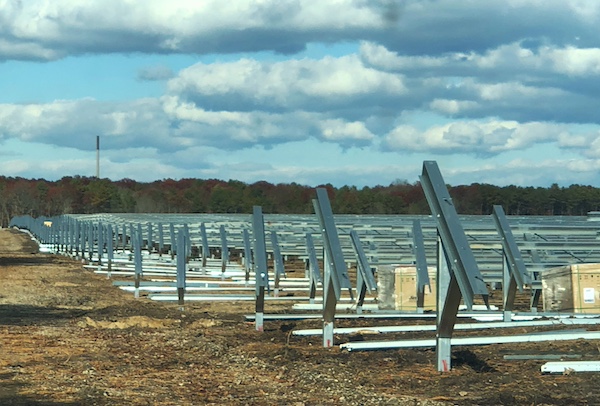
Throughout my life and career as a real estate developer in New York City, I’ve had many successes. In what is clearly one of my most unusual development projects in a long career filled with them, I initiated the building of a solar farm to help t....
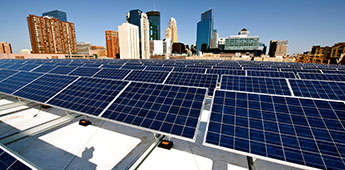
I’m just going to say it, BIPV is dumb. Hear me out…. Solar is the most affordable form of energy that has ever existed on the planet, but only because the industry has been working towards it for the past 15 years. Governments,....
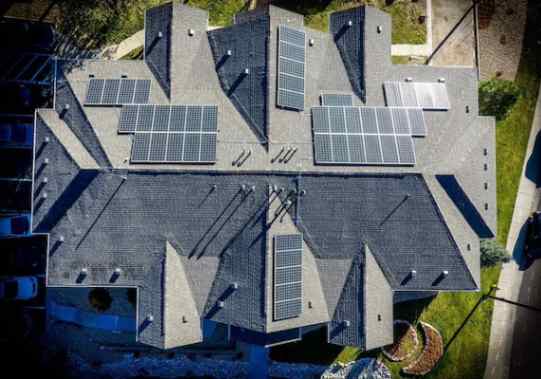
Heat waves encircled much of the earth last year, pushing temperatures to their highest in recorded history. The water around Florida was “hot-tub hot” — topping 101° and bleaching and killing coral in waters around the peninsula. Phoenix had ....
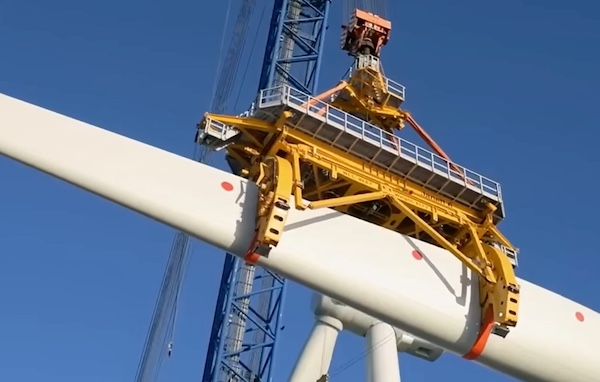
Wind turbines play a pivotal role in the global transition to sustainable energy sources. However, the harsh environmental conditions in which wind turbines operate, such as extreme temperatures, high humidity, and exposure to various contaminants, p....
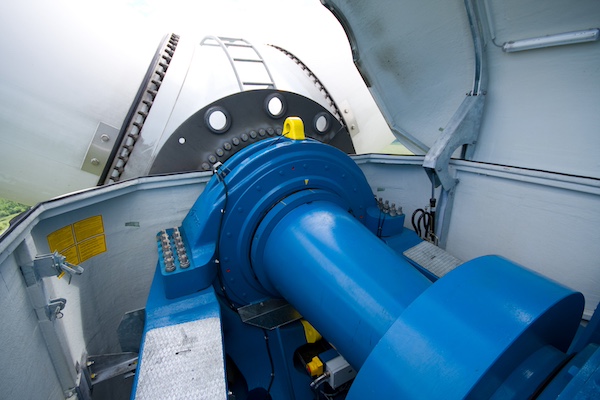
Wind energy remains the leading non-hydro renewable technology, and one of the fastest-growing of all power generation technologies. The key to making wind even more competitive is maximizing energy production and efficiently maintaining the assets. ....
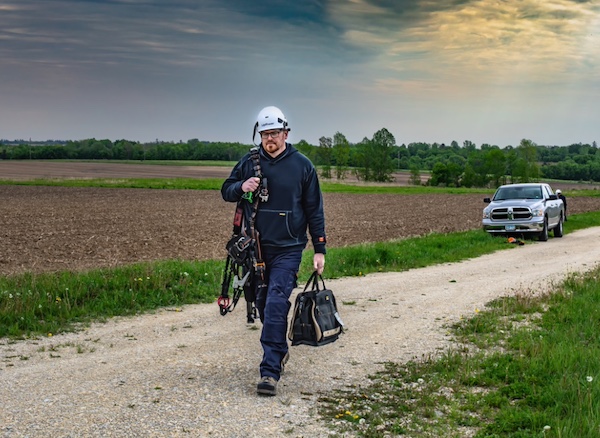
The allure of wind turbines is undeniable. For those fortunate enough to visit these engineering marvels, it’s an experience filled with awe and learning. However, the magnificence of these structures comes with inherent risks, making safety an abs....
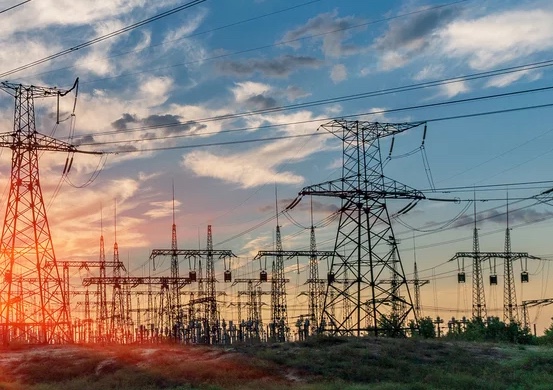
Battery energy storage is a critical technology to reducing our dependence on fossil fuels and build a low carbon future. Renewable energy generation is fundamentally different from traditional fossil fuel energy generation in that energy cannot be p....
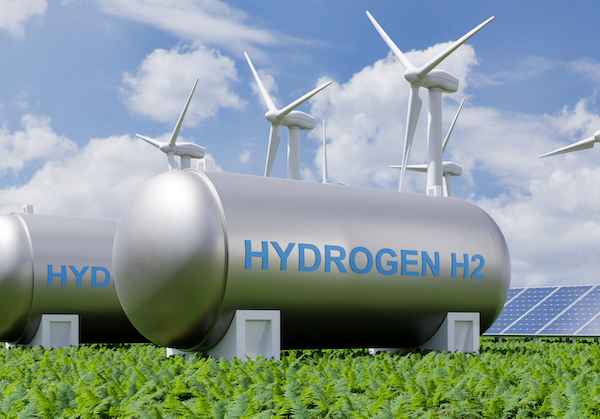
Not enough people know that hydrogen fuel cells are a zero-emission energy technology. Even fewer know water vapor's outsized role in electrochemical processes and reactions. Producing electricity through a clean electrochemical process with water....

In the ever-evolving landscape of sustainable transportation, a ground-breaking shift is here: 2024 ushers in a revolutionary change in Electric Vehicle (EV) tax credits in the United States. Under the Inflation Reduction Act (IRA), a transforma....

Now more than ever, it would be difficult to overstate the importance of the renewable energy industry. Indeed, it seems that few other industries depend as heavily on constant and rapid innovation. This industry, however, is somewhat unique in its e....

University of Toronto’s latest student residence welcomes the future of living with spaces that are warmed by laptops and shower water. In September 2023, one of North America’s largest residential passive homes, Harmony Commons, located....
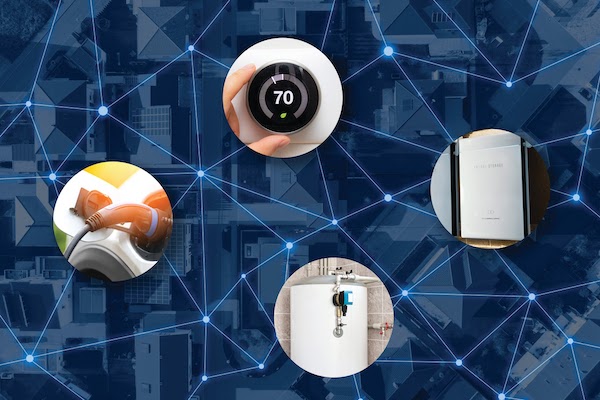
For decades, demand response (DR) has proven a tried-and-true conservation tactic to mitigate energy usage during peak demand hours. Historically, those peak demand hours were relatively predictable, with increases in demand paralleling commuter and ....